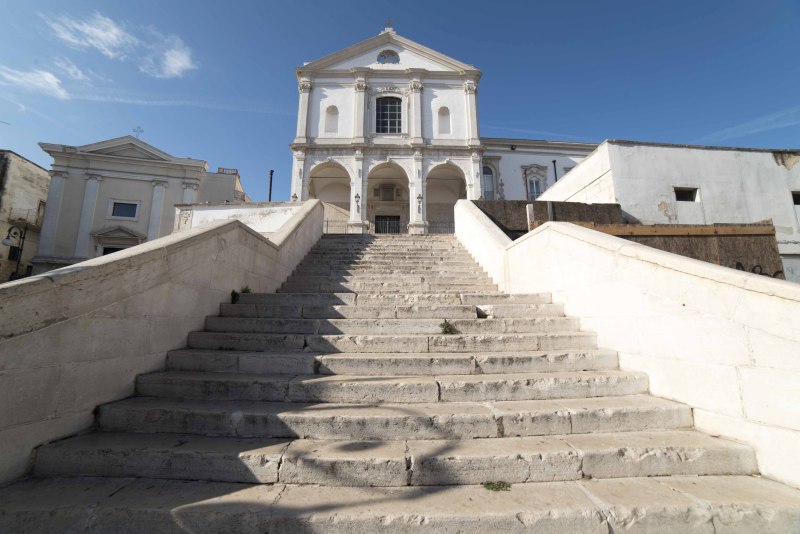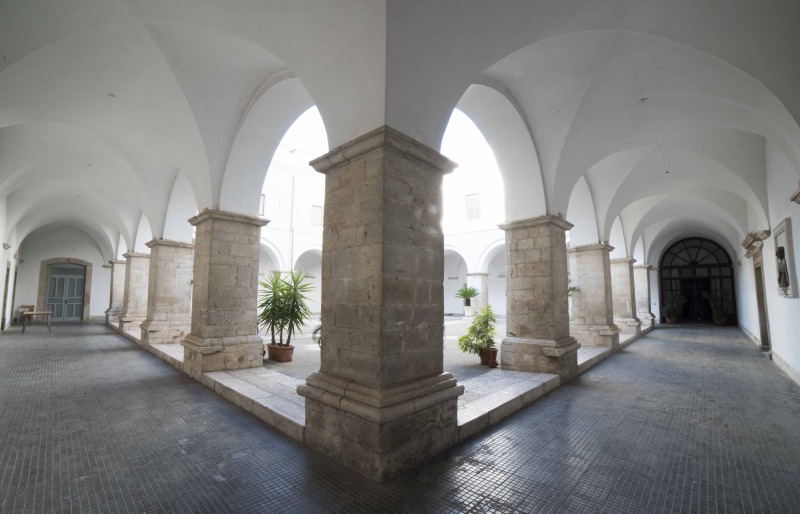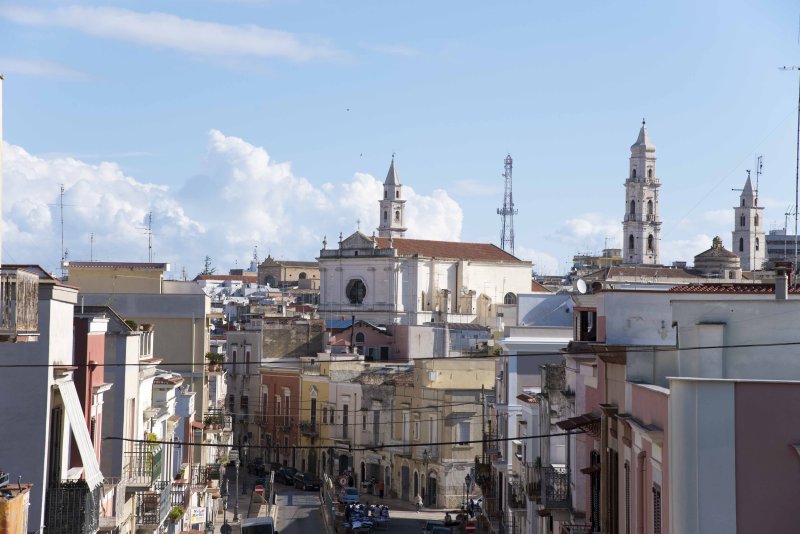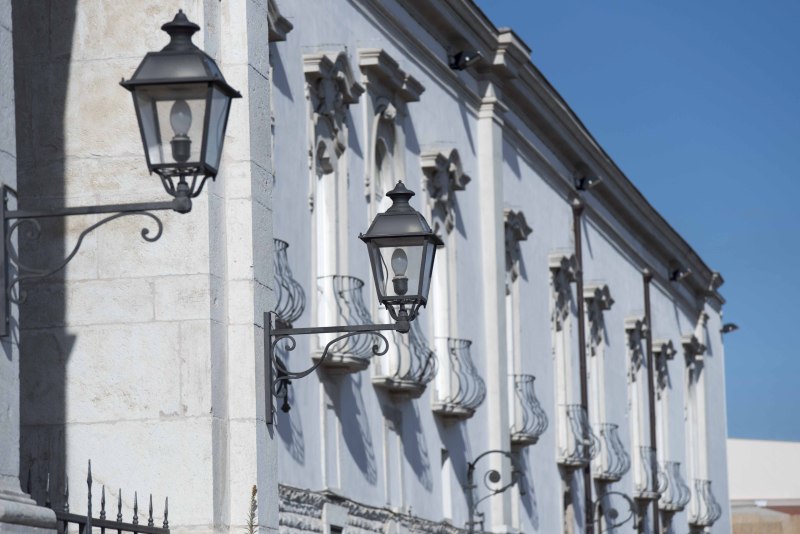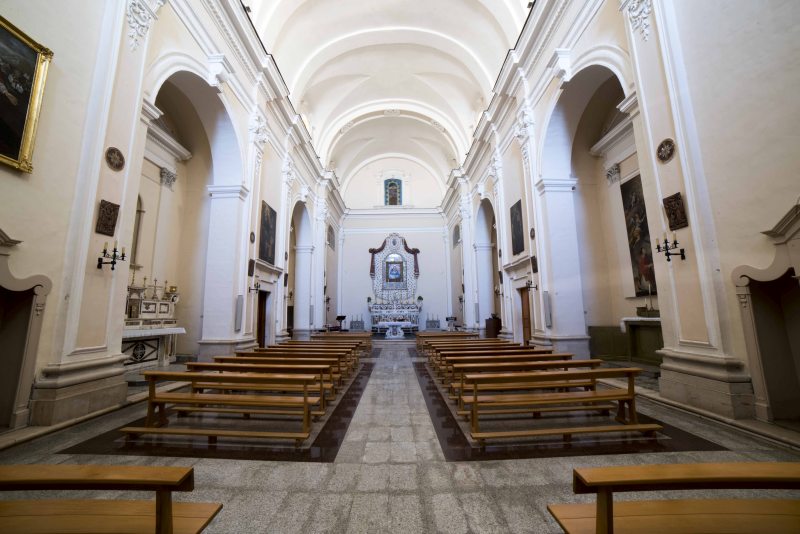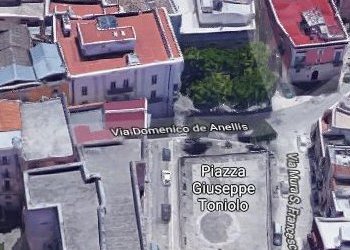CHURCH AND CONVENT OF THE CARMINE
In 1681 Flavio de Excelsis, last descendant of a noble family of Andria, bequeathed his goods to the Carmelite fathers. His property included a hillock outside the city walls where by then stood the church dedicated to the Madonna of Altomare. In this locality the construction of the church and of the convent of the Carmine was begun in 1690. The works were carried out by local workmen, who definitely completed the works in 1753. After the confiscation of the convent complex in the Napoleonic era the church was deconsecrated for some time and then its role as a worship place was restored in 1840. Whereas the adjacent convent was turned into a Diocesan Seminary and the whole structure was entrusted to the Jesuits, who made a few changes and ordered the reconstruction of the bell tower, which had been destroyed during the siege by the French in 1799.
At present, the ground floor of the convent houses the Diocesan Library.
The convent complex has an undoubted monumental appearance thanks to the imposing access stairway and to the vast terracing, where the church stands in central position and shows its facade decorated with Corinthian-style pilasters and lesenes, with a five-arched porch (three central and tho lateral arches) surmounted by a large window. The portal leading into the church features a remarkable frame carved with floral motifs, on top of which stands a statue of the Madonna of the Carmine. The church, which has a single nave covered by a barrel vault, is flanked by six chapels and decorated with 18th-century stucco works. The altar made of polychrome marble stands out in the presbitery. It has a red porphyry drapery originating from the church of Trinity of the monastic complex of Benedectine nuns, which was demolished in the Fascist Era.



